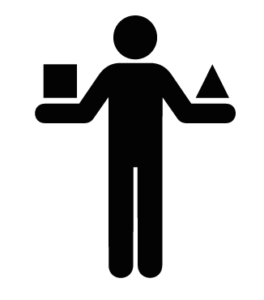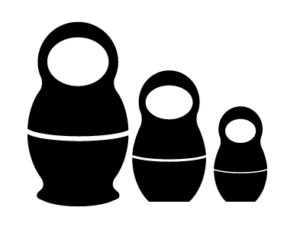1.31: Functions of Adjectives
- Page ID
- 182807
 An adjective modifies a noun; that is, it provides more detail about a noun. This can be anything from color to size to temperature to personality. Adjectives usually occur just before the nouns they modify. In the following examples, adjectives are in bold, while the nouns they modify are in italics (the big bear):
An adjective modifies a noun; that is, it provides more detail about a noun. This can be anything from color to size to temperature to personality. Adjectives usually occur just before the nouns they modify. In the following examples, adjectives are in bold, while the nouns they modify are in italics (the big bear):
- The generator is used to convert mechanicalenergy into electricalenergy.
- The steelpipes contain a protective sacrificialanode and are surrounded by packingmaterial.
Adjectives can also follow a linking verb. In these instances, adjectives can modify pronouns as well. In the following examples, adjectives are still bold, while the linking verb is in italics this time (the sun isyellow):
- The schoolhouse wasred.
- I lookedgood today.
- She wasfunny.
Numbers can also be adjectives in some cases. When you say “Seven is my lucky number,” seven is a noun, but when you say “There are seven cats in this painting,” seven is an adjective because it is modifying the noun cats.
Identify the adjectives in the following sentences:
- Of the four seasons, fall is my favorite; I love the red leaves, the cool weather, and the brisk wind.
- My roommate, on the other hand, thinks that summer is the best season.
- I think she is crazy.
- Fall is better than summer. Summer is too hot and muggy to be enjoyable.
[reveal-answer q=”383934″]Show Answer[/reveal-answer]
[hidden-answer a=”383934″]
The adjectives have been bolded in the sentences below:
- Of the four seasons, fall is my favorite; I love the red leaves, the cool weather, and the brisk wind.
- My roommate, on the other hand, thinks that summer is the best season.
- I think she is crazy.
- Fall is better than summer. Summer is too hot and muggy to be enjoyable. (All of these adjectives follow linking verbs.)
[/hidden-answer]
Comparable Adjectives
 Some adjectives are comparable. For example, a person may be polite, but another person may be more polite, and a third person may be the most polite of the three. The word more here modifies the adjective polite to indicate a comparison is being made (a comparative), and most modifies the adjective to indicate an absolute comparison (a superlative).
Some adjectives are comparable. For example, a person may be polite, but another person may be more polite, and a third person may be the most polite of the three. The word more here modifies the adjective polite to indicate a comparison is being made (a comparative), and most modifies the adjective to indicate an absolute comparison (a superlative).
There is another way to compare adjectives in English. Many adjectives can take the suffixes –er and –est (sometimes requiring additional letters before the suffix; see forms for far below) to indicate the comparative and superlative forms, respectively:
- great, greater, greatest
- deep, deeper, deepest
- far, farther, farthest
Some adjectives are irregular in this sense:
- good, better, best
- bad, worse, worst
- little, less, least
Another way to convey comparison is by incorporating the words more and most. There is no simple rule to decide which means is correct for any given adjective, however. The general tendency is for shorter adjectives to take the suffixes, while longer adjectives do not—but sometimes sound of the word is the deciding factor.
more beautiful not beautifuller
more pretentious not pretentiouser
While there is no perfect rule to determine which adjectives will or won’t take –er and –est suffixes, this video lays out some “sound rules” that can serve as helpful guidelines:
The adjective fun is one of the most notable exceptions to the rules. If you follow the sound rules we just learned about, the comparative should be funner and the superlative funnest. However, for a long time, these words were considered non-standard, with more fun and most fun acting as the correct forms.
The reasoning behind this rule is now obsolete (it has a lot to do with the way fun became an adjective), but the stigma against funner and funnest remains. While the tides are beginning to change, it’s safest to stick to more fun and most fun in formal situations (such as in academic writing or in professional correspondence).
What are the correct comparative and superlative forms for the adjectives below?
| Adjective | Comparative | Superlative |
|---|---|---|
| fun | more fun (or funner, conversationally) | most fun (or funnest, conversationally) |
| red | [practice-area rows=”1″][/practice-area] | [practice-area rows=”1″][/practice-area] |
| shimmery | [practice-area rows=”1″][/practice-area] | [practice-area rows=”1″][/practice-area] |
| fresh | [practice-area rows=”1″][/practice-area] | [practice-area rows=”1″][/practice-area] |
| popular | [practice-area rows=”1″][/practice-area] | [practice-area rows=”1″][/practice-area] |
| squishy | [practice-area rows=”1″][/practice-area] | [practice-area rows=”1″][/practice-area] |
| quiet | [practice-area rows=”1″][/practice-area] | [practice-area rows=”1″][/practice-area] |
| large | [practice-area rows=”1″][/practice-area] | [practice-area rows=”1″][/practice-area] |
[reveal-answer q=”393114″]Show Answer[/reveal-answer]
[hidden-answer a=”393114″]
| Adjective | Comparative | Superlative |
|---|---|---|
| fun | more fun (or funner, conversationally) | most fun (or funnest, conversationally) |
| red | redder | reddest |
| shimmery | more shimmery | most shimmery |
| fresh | fresher | freshest |
| popular | more popular | most popular |
| squishy | squishier | squishiest |
| quiet | quieter | quietest |
| large | larger | largest |
[/hidden-answer]
Non-Comparable Adjectives
Many adjectives do not naturally lend themselves to comparison. For example, some English speakers would argue that it does not make sense to say that one thing is “more ultimate” than another, or that something is “most ultimate,” since the word ultimate is already an absolute. Such adjectives are called non-comparable adjectives. Other examples include dead, true, and unique.
Note: Native speakers will frequently play with non-comparable adjectives. Although pregnant is logically non-comparable (someone is pregnant or she is not), you may hear a sentence like “She looks more and more pregnant each day.” Likewise extinct and equal appear to be non-comparable, but one might say that a language about which nothing is known is “more extinct” than a well-documented language with surviving literature but no speakers, and George Orwell once wrote “All animals are equal, but some are more equal than others.”
Look at the following list of adjectives. Are they comparable or non-comparable? Explain your reasoning why. If the adjective is comparable, list its comparative and superlative forms. For example:
- Tall is a comparable adjective. Height exists on a scale: there are many different heights. The comparative is taller, and the superlative is tallest.
- Dead is a non-comparable. You are either dead or alive. However, this concept is played with in the movie The Princess Bride. Miracle Max says Wesley is “only mostly dead.” Max is expressing the fact that Wesley is still alive, despite being very close to death’s door.
| impossible | [practice-area rows=”1″][/practice-area] | large | [practice-area rows=”1″][/practice-area] |
| pretty | [practice-area rows=”1″][/practice-area] | nuclear | [practice-area rows=”1″][/practice-area] |
[reveal-answer q=”245005″]Show Answer[/reveal-answer]
[hidden-answer a=”245005″]
| impossible | Impossible is a non-comparable adjective. Impossible is defined as something that can’t happen; this can’t be graded on a scale. However, people will play on this for emphasis: “That’s the most impossible idea I’ve ever heard.” | large | Large is a comparable adjective. Size exists on a scale. The comparative is larger, and the superlative is largest. |
| pretty | Pretty is a comparable adjective. Attractiveness exists on a scale. The comparative is prettier, and the superlative is prettiest. | nuclear | Nuclear is a non-comparable adjective. It is a classification, not a gradable quality. In phrases like “the most nuclear weapons” most is referring to how many weapons there are, not “how nuclear” the weapons are. |
[/hidden-answer]
Contributors and Attributions
- Revision and Adaptation. Provided by: Lumen Learning. License: CC BY-SA: Attribution-ShareAlike
- Basic Patterns and Elements of the Sentence. Authored by: David McMurrey. Located at: https://www.prismnet.com/~hcexres/textbook/twsent.html#adj. License: CC BY: Attribution
- Adjective. Provided by: Wikipedia. Located at: https://en.Wikipedia.org/wiki/Adjective. License: CC BY-SA: Attribution-ShareAlike
- Forming comparative and superlative modifiers. Authored by: David Rheinstrom. Provided by: Khan Academy. Located at: https://www.khanacademy.org/humanities/grammar/partsofspeech/the-modifier/v/forming-the-comparative-and-superlative. License: CC BY-NC-SA: Attribution-NonCommercial-ShareAlike
- Image of Russian nesting dolls. Authored by: Dima Lagunov. Located at: https://thenounproject.com/search/?q=size&i=25765. Project: The Noun Project. License: CC BY: Attribution
- Image with square and triangle. Authored by: Anna Vital. Provided by: The Noun Project. Located at: https://thenounproject.com/search/?q=difference&i=433002. License: CC BY: Attribution


